Sharlyn J. Lauby's Blog, page 3
September 25, 2025
Understanding the Difference: Facilitating, Presenting, and Training
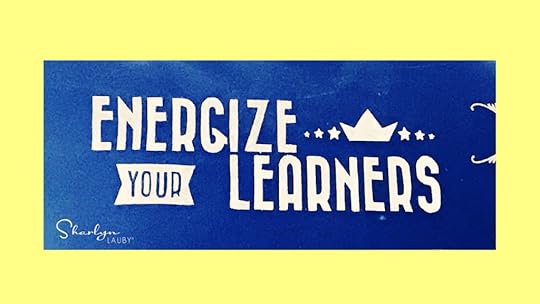
Estimated reading time: 4 minutes
It’s fall conference season, and I’ve noticed that people are using the terms facilitating, presenting, and training interchangeably. I’m guilty of it too. For the purposes of a conversation, it might be perfectly acceptable to use the terms in that way. But when it comes to execution, the terms are different and the word that’s used could create expectations for the audience. For example:
Facilitation is the act of helping other people to deal with a process or reach an agreement or solution without getting directly involved in the process, discussion, etc. A consultant might facilitate a focus group on customer service expectations.
Presentation is an activity in which someone shows, describes, or explains something to a group of people. A manager could present the proper way to fill out a form during a staff meeting.
Training is the action of teaching a person a specific skill or type of behavior. Human resources can conduct training on the best way to coach an employee for improved performance.
As a participant, if I attend a facilitated session, I expect the facilitator to stay out of the conversation. If I attend a presentation, I expect something like a lecture. And, if I attend a training session, I expect activities and skill practices. I believe understanding this is important, because participants make the decision to receive information a certain way and when the speaker doesn’t deliver the session in the way that was expected, it can be ineffective.
All three of these delivery methods require pre-work. Facilitation requires gathering information about the situation or issue to be discussed. Presentations are researched. Training is best when a needs analysis is completed. While it is possible to combine some of these methods, there are limitations. For example, when working on a presentation, it might be tempting to include some training type activities. But the training session will only be effective if the presenter is familiar with their audience.
That’s one of the reasons I wanted to bring this topic up, is because I’ve noticed a lot of speakers moving toward this combination of training/presenting. And I’ll be honest. I don’t think it’s as fluid as one might think. I totally understand the concept of entertaining education and that can happen in both training and presentations. What I’m talking about is the “Let’s do an activity!” during a presentation. Here are three things to keep in mind:
The activity needs to be relevant. I understand that many people like interaction so putting an activity in the presentation can be well-received. But the activity needs to have a point or takeaway. Now, I’m going to be brutally honest here: I’ve never been a part of a three-minute breakout discussion during a conference presentation that yielded an epiphany. Yes, it can be fun, but there’s never enough time allocated to make the conversation effective or relevant. Which leads me to my next point…The activity always seems to take longer than expected. I’ve seen many sessions where the speaker asks the group to take 2 minutes to discuss something. Depending upon the size of the group, the two-minute activity becomes five or sometimes ten minutes. Primarily because the speaker has a hard time getting the attention of the group again. It’s easy to do this type of activity during a presentation with small groups. With large groups, it can get out of control. When a speaker loses control of the group, they lose control of the session. I’ve seen an increasing number of speakers do an activity then rush through a dozen PowerPoint slides because their timing is off. So, participants miss out on information . . . because of an activity . . . that wasn’t really relevant in the first place. This can be frustrating because participants were expecting a presentation that they didn’t get.As organizations continue to tell employees they need to own their career development, employees are going to place emphasis on the methods that information is being shared. Because they have a goal to gain valued information. And the company is holding them accountable for getting that information. So, speakers need to be cognizant that facilitation is objective, presentations accomplish certain goals, and training is interactive.
Image captured by Sharlyn Lauby at the Association for Training and Development annual conference in Orlando, FL
The post Understanding the Difference: Facilitating, Presenting, and Training appeared first on hr bartender.
September 23, 2025
Your Workplace Contributes to Psychological Safety

Estimated reading time: 7 minutes
Trust and communication are essential for good working relationships. And good working relationships create better outcomes for the organization. By better outcomes, I mean productivity and profitability.
When organizations create workplaces where employees feel they can trust the people they work with and express concerns when necessary, it’s called psychological safety. Part of psychological safety is the relationship piece. Many organizations include discussions about psychological safety in their management development programs.
I recently listened to a webinar titled “Safe Spaces: Unlocking the Power of Psychological Safety” where speaker Rebecca Greier Horton, PG, WELL AP, REM, talked about another aspect of psychological safety – the physical workspace. Do employees feel safe in their environment? Does the workplace bring out the best in their performance?
I’ve known Rebecca for years so I asked if she would help us understand more about the connection between psychological safety and the workplace, and thankfully she said yes. Rebecca is a senior global insights strategist for MillerKnoll. In her role, Rebecca works with MillerKnoll clients to develop solutions that address an organizations’ physical, social, and cognitive needs. Prior to her work at MillerKnoll, she led environmental, health, safety, and sustainability efforts at organizations like AT&T and Bombardier Aerospace.
Rebecca, thanks so much for being here. Let’s start with a definition. What is psychological safety and why should organizations care about it?
[Greier Horton] Psychological safety is all about creating an environment where people feel safe to speak up—where they can share ideas, ask questions, raise concerns, or admit mistakes without fear of embarrassment, punishment, or judgment. And right now, with everything we’re seeing—burnout, anxiety, and disengagement, this couldn’t be more important.

Reports like Gallup’s State of the Global Workplace (2024), Deloitte’s Mental Health & Employers (2024), and the WHO’s From Loneliness to Social Connection (2025) are waving red flags: employees are struggling. The good news is, we know where to focus and what we are trying to solve for.
Dr. Amy Edmondson, one of my favorite thinkers in this space, put psychological safety on the map decades ago. Her research showed that the most innovative, highest-performing teams are the ones where people feel safe to be themselves. When teams practice what she calls ‘kind candor’, it breaks down the fear that usually impedes communication. That’s not just good for mental wellbeing—it powers innovation.
For organizations, the takeaway is simple: want engaged, creative, mentally healthy employees? Start with psychological safety. It’s a solid strategy for long-term success.
Often when we talk about psychological safety, we think about relationships. But during your webinar, you talked about the role that workplace design plays. You don’t have to give away everything you mentioned during the webinar, but can you share a little about how workplace design helps to build psychological safety?
[Greier Horton] Yes! Traditionally, workplace design has focused heavily on activities—think of the decades long Activity-Based Work (ABW) movement. But over time, we’ve realized something deeper: it’s not just what you do, it’s who you do it with—and how you feel while doing it.
MillerKnoll has shifted toward what we call Relationship-Based Work (RBW). This approach puts connection, wellbeing, and change at the core of workplace design. Instead of designing just for tasks, we design for social dynamics—building spaces that support everything from casual encounters to deep collaboration. That includes quiet nooks for reflection, open zones for teamwork, and areas that feel genuinely welcoming.
When people feel they belong and their relationships are supported by the environment, psychological safety grows, and people flourish. Space itself becomes a tool—not just for productivity, but for trust, connection, and creativity.
Over the past few months, many organizations are announcing return to the office (RTO) plans. As they’re getting ready for employees to return, what are 2–3 things they should be thinking about from a workplace design perspective (to create psychological safety)?
[Greier Horton] The employees coming back might have the same ID numbers—but let’s be real, they’re not the same people. The world has changed, we’ve changed and so have our needs. The most forward-thinking companies are honoring that.

Part of psychological safety is knowing you are understood. One of the biggest complaints I hear is ‘I come in and everyone’s on a Teams call – I could have stayed at home!’ When employers demonstrate and communicate that the office is a place for human connection, not just a stage for virtual calls, employees feel seen and heard. The new focus of the physical office is on meaningful, in-person interactions. Here are a few key things to think about:
Control and choice are essential. We crave the ability to choose where and how we work—not just plopping down at the same desk every day. Whether it’s a soft seating area for heads-down time or a collaborative zone for brainstorming, variety matters. It keeps us stimulated and mentally connected.
Related to control and choice is noise sensitivity. It always has been but after years of controlling our home work environments, we’ve lost tolerance for distractions like loud talkers (or worse, loud snackers). So, design needs to offer better acoustic zoning and privacy on demand—think quiet zones, focus rooms, or even just a well-designed ‘respite space’ where someone can take a breather and reset emotionally.
And on a bigger scale, space metrics are evolving. It’s not about how many desks you can squeeze in—it’s about the quality of experience. If you’re flying people in from across the globe, are you hosting them in a sterile hotel conference room? Or are you creating your own innovative spaces that support real, meaningful interaction?
It’s about designing for human experience, not just efficiency.
Let’s flip the last question. As employees are thinking about spending more time in the office, what are some things they need to be thinking about—so they can feel more comfortable at work?
[Greier Horton] If you’re heading back into the office, the key is to find ways to regain that sense of choice and control—not just as an individual, but as part of a group and community.
One thing we’re seeing work really well is the concept of ‘neighborhoods’—clusters of different types of workpoints grouped together. Maybe it’s a mix of desks, high counters with stools, lounge seating with side tables… whatever suits different work styles. This gives people flexibility, and it just feels more natural—like your home setup, but social.
For managers, this setup also relieves some of that pressure around ‘coffee badging’ and visibility. With neighborhoods, people naturally cross paths, interact organically, and stay connected—without being tethered to the same chair all day.
In short: seek out environments where you can move, breathe, and connect. You deserve to feel like you belong there.
Last question. And this is related to hybrid work. Over the past few years, many people have designed workspace in their homes (aka the home office). I’m not sure I see that completely going away. But for many it’s still important to have a home workspace that allows a person to do their best work. What are 1–2 things that people should consider when designing a home workspace?
[Greier Horton] Oh, home workspaces are here to stay—and they’re just as important to get right. There are a couple non-negotiables if you want to protect your wellbeing:
First up, ergonomics. You need a proper task chair, a worksurface that fits you, and a real monitor/keyboard/mouse setup. Balancing a laptop on your knees from the couch? Cute for 10 minutes, but it’s a fast track to tech neck and long-term strain.
Second, think sensory wellness—light, air, and sound matter. Natural light, access to outdoor views, some plants (hello, biophilia), clean air filters, and ideally, the ability to close a door when you need to focus. These little design choices make a big difference in how you feel and perform.
People have made their home offices personal, creative, and comfortable and that tells us something important. If organizations want people to reconnect with their offices, they’ll need to create spaces that feel just as welcoming, human-centered, and psychologically safe.
I want to thank Rebecca for sharing her insights with us. If you want to learn more, check out MillerKnoll’s Insights page where they share articles and podcasts.
Organizations and employees want the same thing – to perform well. That means not only having good working relationships but creating a workplace that allows employees to perform at a high level.
The post Your Workplace Contributes to Psychological Safety appeared first on hr bartender.
September 21, 2025
3 Reasons Silence Is an Important Part of Communication
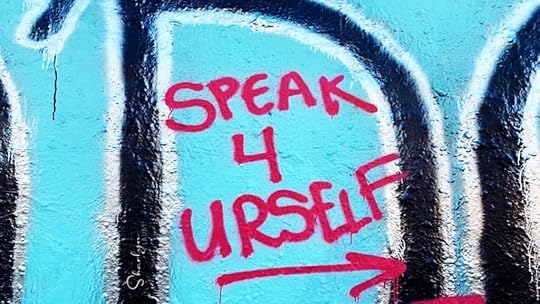
Estimated reading time: 3 minutes
Being able to communicate well is an important part of professional and personal communication. When it specifically comes to verbal communication, we often talk about being able to communicate succinctly and clearly. We talk about the value of listening. But one aspect of communication that we don’t discuss often enough is silence.
Silence can be a useful and powerful tool in communication. I’m not talking creepy moments of silence that last for uncomfortable lengths of time. Think of silence as just a natural pause in the conversation. Here are three reasons that silence can play an important role in communication:
Silence can allow us to collect our thoughts. Sometimes when we’re looking for the right words to express our feelings, taking a moment to think about what we want to say can be helpful. Being able to communicate clearly is key to getting our message across. Silence can allow us to calm our message. If someone is feeling anxious, excited, frustrated, agitated, etc., taking a moment of quiet to collect ourselves can be helpful. This doesn’t mean we have to not express our feelings. In fact, taking a moment of silence could help us communicate our emotions better. Silence can allow others to join the conversation. Adding a moment of silence might encourage someone else to speak up. For example, a moment of silence during an interview might encourage a candidate to add something to their story. Or during a meeting it might allow a participant to ask a question.One more thing. Silence can often help us reduce the “ums” in our conversations. Many of us (unintentionally) pepper our conversations with “ums”. Often an “um” is a way to fill in space until we figure out what we want to say. Taking a brief moment to think out what we want to say and how to say it could reduce the number of “ums” we use.
The key takeaway is that communication doesn’t involve talking all the time.
We can also take this messaging about silence to the written word as well. We need to be able to effectively communicate in writing. We need to be able to comprehend what others write. And we need to know when to put some space – in this case silence – in the conversation. No, this doesn’t mean ghosting someone. But it also doesn’t mean that we need to answer everything right away. For instance, I’m starting to see more people acknowledge an email with a note about when they will respond in full. I think it’s great. Set expectations and manage them appropriately.
Communication is and will continue to be important. Reminders about the pieces to effective communication – like silence – could be timely. Even the best communicators might find a refresher helpful.
Image captured by Sharlyn Lauby while exploring the 34th Street Graffiti Wall in Gainesville, FL
The post 3 Reasons Silence Is an Important Part of Communication appeared first on hr bartender.
September 18, 2025
Recruiting Should Be Covered In the Company Emergency Plan
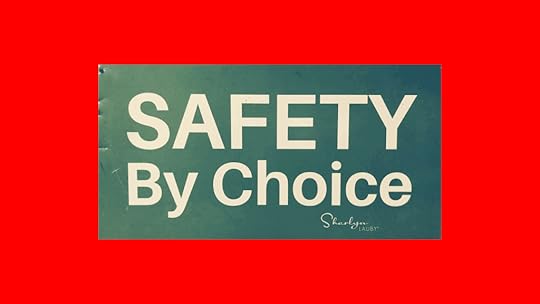
Estimated reading time: 3 minutes
Unfortunately, companies are regularly faced with emergencies. For example, right now, where I live (Florida), it’s hurricane season. Companies might also be faced with workplace accidents or incidents of violence. They could also be faced with a viral video media crisis like two married executives being caught embracing on a jumbotron during a music concert.
My point being, emergencies happen. And when they do, companies should have emergency protocols in place to deal with them. One of the first things people often think about is the physical property. Are people safe? Is the property (aka furniture, fixtures, and equipment) secure? This should also include data files. Does the organization have access to their financial, human resources, sales, etc. systems and data?
Another area that companies need to think about is employees and the workplace. Companies need to have a plan in place to notify employees if they should not come into the office because of an emergency. Employees should also know when it’s safe to return. If an organization believes that the media might contact employees, it could be helpful to let employees know what (if anything) they can say on the company’s behalf. And if executives need to attend media training, this should also happen.
In the case of violence, injuries, or a death, human resources should have a list of resources to provide grief counseling and EAP (employee assistance program) services. HR also needs to have a list of reminders for themselves. While we’re often the ones coordinating the activities, we are still dealing with the same emotions of the situation, and we need to take care of ourselves.
This isn’t a comprehensive list of things that should be included in the company emergency plan. But it’s a start and a reminder to review the company plan regularly. Make sure it’s up to date. And if it doesn’t include recruiting, it should.
Regardless of the type of emergency, when an emergency happens, it’s possible that there will be candidates who are in the process of leaving their current job to come start working at your company. They will want to know what’s going on. Do they still have a job? Will orientation and onboarding take place as scheduled? Someone needs to contact candidates and let them know what’s going on. Especially if it means rescinding a job offer or postponing a start date.
I learned about the importance of including recruiting in the emergency plan many years ago, when I worked for the airline. We experienced a crash. All the people on the plane (including the crew) did not survive. Not only was the company dealing with the government investigation, the passengers’ families, and the crew’s families, but they also needed to let dozens of people who had accepted job offers know they weren’t going to start right away. All of these are priorities and should be handled with the greatest respect.
I know talking about emergencies, disasters, etc. isn’t how we want to spend our time. But it’s absolutely necessary. And the best time to have these discussions is before the company is faced with an emergency. During an emergency, there’s so much going on that it could potentially get lost in moment. So, consider today’s article a reminder to regularly review the company emergency plan and to make sure it covers everything including recruiting.
Image captured by Sharlyn Lauby while exploring the streets of Tampa, FL
The post Recruiting Should Be Covered In the Company Emergency Plan appeared first on hr bartender.
September 14, 2025
Employee Health Care Benefits Changes Under the One Big Beautiful Bill
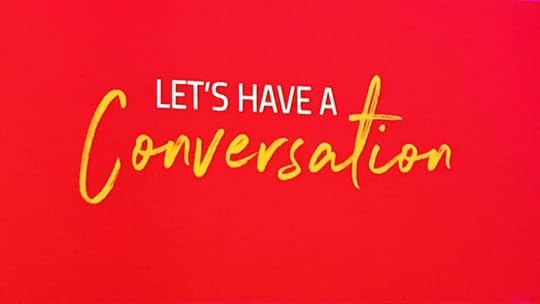
Estimated reading time: 7 minutes
On July 4, 2025, the President signed into law the One Big Beautiful Bill (OBBB), also known as H.R.1. The bill has lots of things in it, but employers might not be aware that part of the bill impacts employee benefits. So regardless of any personal feelings about the bill, HR departments should want to understand how this legislation impacts their programs.
Our friends at HUB International recently did a webinar on “What the One Big Beautiful Bill Act Means for Benefits in 2026 and Beyond”. A recording of the session can be found on their website if you want to check it out. It was an interesting and educational conversation.
To help us understand more about the OBBB and its impact on employee benefits, I reached out to Cory Jorbin, Esq., national director of compliance consulting at Hub International. In his role, Cory consults with employers of all sizes to design, implement and ensure the compliance of employee benefit plans. He holds a Juris Doctorate from Cleveland State University and is a licensed attorney in the State of Illinois and admitted to practice before the U.S. Tax Court.
Cory has spoken to us before about Individual Coverage Health Reimbursement Arrangements and the Affordable Care Act. Please remember that his comments shouldn’t be construed as legal advice or as pertaining to any specific factual situations. If you have detailed employee benefit questions, they should be addressed directly with your friendly neighborhood benefits broker or labor and employment attorney.
Thanks for being here Cory. We’re not going to cover everything today, but just so readers are aware, what are some of the employee benefits related topics mentioned in the bill?
[Jorbin] The major benefits related updates in the OBBB focus on telehealth, direct primary care (DPC), and dependent care assistance programs (DCAP).
Telehealth can now permanently be covered under high-deductible health plans (HDHP) before the statutory minimum deductible has been satisfied. This effectively means that HDHPs can now once again cover telehealth at 100%. This provision is effective retroactively to January 1, 2025.
Starting January 1, 2026, direct primary care (DPC) arrangements meeting certain requirements will be treated as health savings account (HSA) compatible. This means individuals with HDHP coverage who also participate in DPC will be eligible for HSA contributions. HSA funds will also be able to be used to pay DPC fees.
Finally, starting January 1, 2026, the annual contribution limits for dependent care assistance programs (DCAP) and dependent care flexible savings accounts (DCFSA) will increase from $5,000 to $7,500. This is significant because other than a one-time exception during the COVID-19 pandemic, the contribution limit has been unchanged since 1986.
Let’s start with the first topic you mentioned – telehealth. Over the past few years, telehealth has become very popular option for both providers and patients. The OBBB did make some changes where telehealth is concerned. How do the telehealth changes in the OBBB impact employer health care plans?

[Jorbin] The OBBB now permanently allows HDHPs to cover telehealth at 100%. This presents employers who sponsor HDHPs with the choice of whether to add this coverage. This flexibility also allows HDHPs to provide telehealth at less than the full fair market value. For example, an employer could choose to provide telehealth at a nominal fee of $5 or $10 per visit. Therefore, this isn’t just a choice between not charging at all or charging fair market value.
Employers who provide telehealth at 100% or who only charge a nominal fee are likely to see increases in telehealth utilization. However increased telehealth utilization may in turn lead to better outcomes and potentially lower claims over the long term. For example, a person experiencing certain symptoms may be reluctant to go to an urgent care or their primary care physician, but they may be more likely to utilize telehealth services due to the convenience and lower cost. If a telehealth provider prescribes a course of treatment or directs the member to seek additional care, this may potentially reduce complications caused by putting off care and thus improve outcomes and reduce claims.
The next topic you mentioned is the use of direct primary care (DPC). I’m sure we could talk about this all day, but for those who might not be familiar, what is direct primary care and why should employers pay attention to it?
[Jorbin] DPC is an arrangement where a fixed fee is paid to a provider in exchange for a suite of primary care services. The fixed fee is typically charged monthly and applies regardless of how many visits a person has. The health plan is not billed for services provided by the DPC provider. I find it helpful to compare these arrangements to gym memberships …. the fee allows for access to the facility and applies whether a person takes a month off and doesn’t go at all, or if they go every day. The same concept applies to DPC.
Employers should be aware of DPC because this may be a way for health plans to help manage plan expenses related to primary care, while also growing significantly, with new providers regularly entering the market.
DPC is not the right solution for every plan, which is why employers should work with their brokers and consultants to understand whether DPC is an option for them.

Current and previous administrations have talked about the need to encourage savings, especially when it comes to health care. The OBBB has some new provisions where health spending accounts (HSAs) are concerned. Can you share some high-level details?
[Jorbin] Both the telehealth and DPC provisions referenced above relate to HSAs as they expand what is allowed under HDHPs. Effectively these provisions expand that HDHPs are allowed to cover, while also maintaining their HSA compatibility. Though employers aren’t required to cover telehealth at 100% or add DPC to their HDHPs, the ability to do this potentially makes HDHPs more attractive options for those who previously avoided HDHPs.
Notably, there had been additional HSA related provisions included in earlier versions of the OBBB; however, they did not make it to the final versions. We have seen some of these proposals in the past, such as allowing individuals with Medicare Part A to still make HSA contributions. Therefore, it is possible these may resurface at some point in the future.
Last question. The topic of employee benefits is often viewed as complex for both employers and employees. Can you suggest a couple of things that employers could do to help communicate changes to employees?
[Jorbin] As open enrollment approaches for calendar year plans, they should evaluate their communication strategies and determine whether their approach is the right fit for their populations. Here are a couple of things they should keep in mind.
There are 5 generations in the workforce, and different generations prefer to communicate in different ways. Some prefer a hardcopy of their benefits guides, some like an electronic version, while others like everything on an app. Employers should consider whether they are communicating in the best methods to truly reach their employee populations.Employers should look at the changes they are making to their benefits and highlight those changes. Since it is likely impossible to highlight every single change, employers should focus on the big changes. If an employer is adding DPC, they should highlight this and make sure to communicate what this is and how it works.Employers should be cautious about how they communicate benefits reductions (such as increasing employee deductibles) as employees will likely be displeased with this.
A huge thanks to Cory for sharing his insights with us. Don’t forget to check out Hub International’s webinar on how H.R.1 is going to impact employee benefits.
Employee benefits are complicated. And incredibly personal. I learned about employee benefits like health insurance the hard way … a car accident. And I was incredibly lucky. Someone from my company’s HR team came to the hospital and explained to my family how my benefits work. I’m not naïve, that probably wouldn’t happen today.
So as a human resources professional, I’ve always wanted to make sure that employees knew about their benefits, so they never had to learn about them the way I did. Even if we weren’t dealing with changes under the OBBB, HR departments should find multiple ways to communicate benefits and communicate them all year long, not just during open enrollment.
Make sure employee know when benefits changes occur and how their benefits work.
The post Employee Health Care Benefits Changes Under the One Big Beautiful Bill appeared first on hr bartender.
September 11, 2025
Using Empathy Maps to Create a Better Employee Experience

Estimated reading time: 4 minutes
I’ve seen a few articles lately – and I’m sure you have too – about the relationship between artificial intelligence (AI) and empathy. The articles implying that with the increase in AI, there will be a decrease in empathy.
Empathy is a very difficult topic. It’s defined as being able to understand and share the feelings of another. And it’s often confused with sympathy. In thinking about empathy, I was reminded of a session that I attended at a conference years ago. This was an event for WordPress developers and since HR Bartender runs on WordPress, Mr. Bartender and I thought it would be interesting to attend. The session was about the user experience and how developers need to have empathy for users when designing websites. The speaker said, “You are designing for other people. Who are these people? What do they think and feel?”
That question about the user experience immediately made me think of the employee experience. Even if the organization is using AI tools, they should be asking themselves, “You’re designing for employees. Who are our employees? What do they think and feel?” One way we can get to the answers of these questions is by creating an empathy map.
An empathy map is a template that helps identify what individuals think, feel, hear, see, and do. Developers also use them during the design process. I could see them being a useful tool for HR and management to develop employee personas.
Organizations already develop customer personas as part of their marketing plans. And HR departments create candidate personas as part of their talent acquisition strategy. Why not create an employee persona to help with the development of the employee experience? One note before we go any further, personas are not intended to be tools for discrimination and/or exclusion. Personas are designed to creating understanding and focus to help find ways to connect the audience with the organization.
The idea behind using an empathy map for the employee experience is to gather data about the current employee experience and then analyze it. Organizations can collect data via face-to-face interviews, focus groups, and surveys. The information would help the organization understand employee motivations, frustrations, and goals. Because the intent of the employee experience is to increase engagement and reduce frustrations, so employees are able to work productively and accomplish their goals.
Once we have a better understanding of our current employee experience (by creating employee personas from the empathy maps), the organization can create a plan to create or redesign the employee experience. If the company already has an employee experience strategy, then it’s possible this activity will confirm your actions. Or maybe indicate that a couple of things need tweaking. The organization can use a traditional gap analysis, create a journey map, or my personal favorite build a SMART plan. Bottom-line: use an action planning tool that you know yields results. Execution is key.

One more thing. Consider creating stories to connect employees to the plan. Storytelling is a powerful tool, and this could be a great way to market that the organization is listening and act. A simple 3-step storytelling model is WHO – WHAT – WHY. Have employees fill in the blanks: As a WHO, I want to WHAT, so I get this WHY. An employee response might look like, “As a manager, I want my employees to succeed, so I can help the company achieve its goals.”
As organizations are thinking about their plans for next year, this is a perfect time to revisit the organization’s employee experience strategy to ensure that employee needs are still being met. Organizations and employees want the same thing – high performance. So put the strategy in place to achieve it.
Customer empathy map courtesy of Orange Snowman
The post Using Empathy Maps to Create a Better Employee Experience appeared first on hr bartender.
September 9, 2025
Bookmark This! The Performance Management Edition

Estimated reading time: 3 minutes
Performance is important – employee performance, manager performance, department performance, and organization performance. You get it. They’re all important. That’s why having a performance management strategy matters.
In fact, not only is having a strategy essential but so is actually doing what’s in the strategy. It’s great to have a beautifully written strategy with goals and milestones. But if no one is doing what’s in the strategy, well, the organization will not see the results they want. And as we just mentioned in the opening paragraph … results matter.
Here are some resources that could be helpful in getting the organization refocused on the daily activities associated with performance management.
Performance Management: 5 Drivers for Success
Organizations cannot let the difficulty of the task keep them from creating a successful performance management process. Not taking the time to define the process isn’t fair to the either the manager or the employee.
10 Performance Management Tips for the First Time Supervisor
Deep down inside, we want regular feedback about our performance. “No news is good news” isn’t a performance management philosophy. It’s critical that supervisors learn how to deliver feedback. So, whether you’re a first-time supervisor or seasoned manager, this article shares 10 things to remember when it comes to employee performance reviews.
How to Improve Performance Results at Work
Doing our best work isn’t always easy. Maintaining high performance isn’t easy either. But there are a few things we can do to maintain high performance and achieve our professional goals. This article talks about 7 steps to remember for better results.
Employee Performance Conversations: Remember to Follow Up
When employees are doing good work, managers need to tell them. If the only time managers chat with employees is when they’re doing something wrong, well … employees just won’t want to speak with their manager. Create an environment where positive performance is regularly discussed.
Use the ACE Framework to Monitor Performance Management
Both organizations and employees want to be productive. There’s a performance management framework called ACE (alignment, capabilities, engagement) that organizations can use to make sure their system is accomplishing its goals.
Many organizations measure performance on a calendar year. So, this is a perfect time to review current strategies and set goals for the upcoming year.
Organizations have always been focused on performance. Even more so now. This isn’t necessarily a bad thing. High performance helps the organization meet its revenue goals. It helps to deliver excellent customer service. It can provide the resources to develop new products and services. And it can lead to hiring more employees, increasing professional development opportunities, and yes, contributing to improving wages and benefits.
But for these things to happen, organizations need to get performance management right. Not just the strategy, but the daily conversations and actions.
Image captured by Sharlyn Lauby while exploring the streets of Columbus, OH
The post Bookmark This! The Performance Management Edition appeared first on hr bartender.
September 7, 2025
When Firing Employees – Use Respect
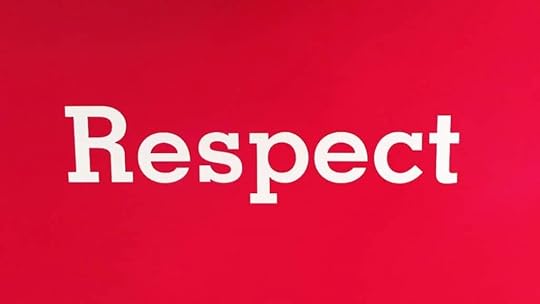
Estimated reading time: 2 minutes
I came across an article on Salary.com titled “How You Fire Someone Matters” from friend and attorney Heather Bussing. It’s a great read and I hope you’ll check it out. The article talks about the company owning their part in the termination and considering severance as part of a package.
I wanted to add a little something to the article and that’s to treat the exiting employee with respect. If you look up respect on the internet, it’s about treating people with consideration and fairness. It doesn’t matter why the termination is happening.
Employee caught sleeping on the job. Yep. Going to fire them? Yes. You can still treat them with respect.Employee admits to falsifying their expense report. Yes. Are they going to get fired? Definitely. Treat them with respect. A group of employees are caught stealing equipment. Yes. Are they going to get fired? Yes. Will they possibly face criminal charges? Maybe. But we can still treat them with respect.We don’t have to be the employee’s friend. We don’t have to like the situation. We can be frustrated, disappointed, and even angry. But we can let them know that their work with us is done. We can answer their questions about benefits and final paychecks. We can make sure they get their personal belongings out of their locker and/or desk.
If organizations do a good job of setting expectations with employees, then employees know when they’ve put themselves in the position of losing their job. It’s unfortunate. But the employee does need to accept responsibility for their actions. And their manager or HR doesn’t need to be mean or disrespectful about it.
It is possible to part ways with an employee respectfully, even when the employee doesn’t give the company respect. The Salary.com article is absolutely right. How organizations fire someone matters.
Image captured by Sharlyn Lauby while exploring the streets of Washington, DC
The post When Firing Employees – Use Respect appeared first on hr bartender.
September 4, 2025
Use Peer-to-Peer Learning to Introduce Artificial Intelligence
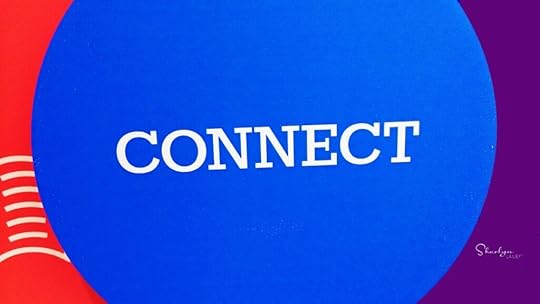
Estimated reading time: 3 minutes
We don’t talk about peer-to-peer learning enough. As a reminder, peer-to-peer learning is when employees help other employees learn. Peer-to-peer learning can be an effective way to introduce employees to new concepts and reinforce skills. It doesn’t take anything away from classroom learning, eLearning, or self-learning methods. Consider peer-to-peer learning as an extra option.
I wanted to talk about peer-to-peer learning today because it could be a great way for introducing employees to artificial intelligence (AI). One of the challenges that I see with AI is getting employees comfortable with using it. Maybe before the organization has formal learning programs about the use of AI, it could make some sense to have informal sessions where employees work together using AI tools.
Identify AI ambassadors. There are probably employees who love the idea of AI, use it at home, and can’t wait to use it regularly at work. And there are probably definitely employees who are suspect about the company’s use of AI. Plus, everything in between. Find some employees who would be interested in learning more about AI and becoming AI ambassadors. Not just AI’s biggest fans. Find some employees that need convincing too.
Creating AI ambassadors reminds me of a situation years ago where the company I worked for was introducing a new benefit program. Of course, HR was going to attend a detailed training session about the new benefit plan. But several employees were invited too. They received the same level of training as HR.
The advantage to this approach was that when employees in the operation were talking about benefit program changes … and possibly probably spreading falsehoods, our benefits ambassadors would speak up and say, “Hey – that’s not correct. Here’s what’s really going on …”. The ambassadors where able to set the record straight because HR wasn’t around the correct the conversation.
Use peer-to-peer learning to establish trust. Adding to my story about the benefits ambassadors, basically employees learned from a peer. This didn’t mean the company wasn’t going to have enrollment meetings. But it did stop the spread of misinformation.
Employees told us that they appreciated getting the correct information from a peer. I’m not saying that employees didn’t trust HR but let’s face it … sometimes employees are suspect of HR and the company’s decisions. HR can’t be everywhere, and we don’t hear everything. So, we can’t answer all the questions. Having ambassadors keeps the conversation focused on the right things.
Create a learning community. As the organization adopts AI and continues its AI journey, having a learning community could be beneficial. Artificial intelligence is changing rapidly. It could be helpful to have more than one person or one department in charge of AI. Organizations could bring their ambassadors together on a regular basis to discuss what’s happening in the world of AI and how it impacts work.
Being an AI ambassador doesn’t have to be a one and done assignment. It could be a role that is ongoing. Employees might love being a part of the conversation. Organizations might learn from employee insights. Everyone wins!
If organizations want to adopt AI tools, they need to create and support collaborative communities where employees can learn about artificial intelligence. Implementing AI in a silo could create suspicions and that doesn’t encourage learning, adoption, and growth.
Image captured by Sharlyn Lauby while exploring the streets of Long Beach, CA
The post Use Peer-to-Peer Learning to Introduce Artificial Intelligence appeared first on hr bartender.
September 2, 2025
Keeping Up with Artificial Intelligence Law In the Workplace

Estimated reading time: 2 minutes
We’ve spent a lot of time over the past year talking about artificial intelligence (AI). We’ve discussed having a strategy, setting goals, developing a policy and much more. I’m not really here to talk about that today. I will leave some links at the end of this article as a reminder, just in case you want to take a look at them.
However, there’s one aspect of AI we haven’t spent a lot of time talking about and that’s the law.
I recently came across a resource that I wanted to share with you. Our friends at Foley & Lardner LLP published “The Fast Follower’s Guide to Recent AI Law”. I found it to be interesting and informative. It talks about some things to consider when researching, purchasing, and implementing AI solutions.
One of the sections that really caught my attention was on AI and 401(k) plan fiduciary implications. We often talk about artificial intelligence and talent acquisition – which is important – but what about AI and 401(k) plans?
I don’t want to give everything away (and I’m also not a lawyer), but in this section about 401(k) plans the attorneys talk about how investment organizations are using AI tools to track earnings calls, assist financial advisors, and manage stock funds. They also mention a new European Union artificial intelligence law designed to create a regulatory framework for protecting consumers. You can check it out for yourself.
Artificial intelligence tools are moving quickly. Business and government leaders appear to be very supportive of using AI. As human resources professionals, it only makes sense for us to stay current with what’s happening … that includes keeping up from a legal perspective.
P.S. If you’re looking for some resources about AI strategy, goal setting, and policies, I hope you’ll take a look at these articles.
Organizations Need an Artificial Intelligence Strategy
Organizations Should Identify Their Artificial Intelligence Goals
10 Things to Include in Your Artificial Intelligence Policy
Image captured by Sharlyn Lauby while exploring the streets of Lake Buena Vista, FL
The post Keeping Up with Artificial Intelligence Law In the Workplace appeared first on hr bartender.
Sharlyn J. Lauby's Blog
- Sharlyn J. Lauby's profile
- 10 followers



